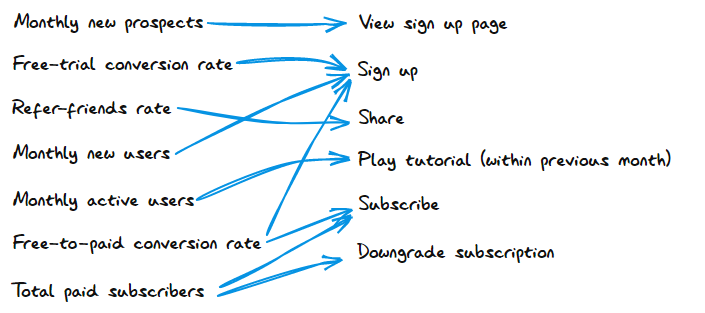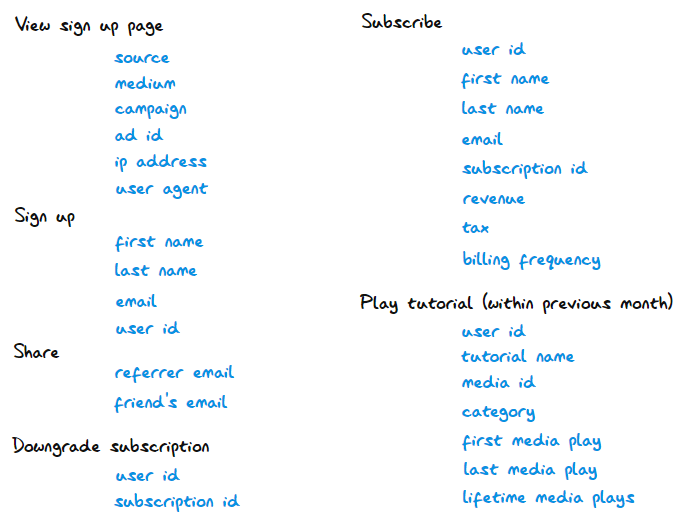If you’re anything like the average business, your tracking is a ‘Hodge Podge’ of tags and pixels splattered all over the place… you’ve got error warnings in Facebook and Google Ads… and you have big blind spots in your marketing analytics.
The main reason this happening is from NOT having a Tracking Blueprint.
Without a plan, one team member does things one way, while another does things another way.
Imagine trying to construct a building without a Blueprint… the builder, plumber, electrician, and glaziers all doing their own thing.
Costly mistakes and delays would be inevitable!
That’s why they have to follow a Blueprint (with a competent project manager directing things).
In the same way, you need a Blueprint for your tracking, too… otherwise you’ll end up with mess.
So, in this article I share the steps to create a Tracking Blueprint for your business. Then I show how to implement and keep it up to date.
Let’s go!
How to Create a Tracking Blueprint
Imagine I have an Online Fitness business that sells fitness subscriptions.
For this example, we’re using a Free Trial to allow people to try out my service. Then, some of my users will upgrade to a paid monthly membership.
Where do we start?
First, we begin with a Big Picture of the business goals then drill down from there.
Here are the five steps involved:
- State your key business objectives
- Translate those into KPIs
- Identify the events linked with each KPI
- Find the parameters associated with each event
- Summarize in a Tracking Blueprint
Let’s go through each of these step in a little more detail…
1. Business Objectives
Ask, what are the main goals for your business?
I recommend discussing this with some of your organization’s key decision makers. They will likely give perspectives that you hadn’t thought of.
Examples of some some typical high-level business goals:
- Increase revenue
- Grow active user-base
2. Key Performance Indicators
Once your main goals are clarified, we can turn them into measurable KPIs.
Take our “grow user-base” goal, for example. We can measure progress with the following KPIs:
- Monthly new prospects
- Free-trial conversion rate
- Refer-friends rate
- Monthly new users
- Monthly active users
We can also measure progress toward our “increase review” goal with these KPIs:
- Free-to-paid conversion rate
- Total paid subscribers
3. Events
The next step is turn your KPIs into a set of events that are worth tracking.
Using a pen and pad, list your KPIs in one column. Then in another column, list all the possible events for each KPI, and connect them with arrows.

4. Parameters
At this point, you’ll have a list of events you want to track.
Most businesses stop there… they track the events themselves and ignore the RICH data they could otherwise collect with those events.
(Example – when a new prospect sign’s up for a free trial, they typically give name, email, phone, address and so on.)
This is a HUGE mistake because you can use this data to improve both decisioning AND ad-optimization. Both affect your bottom line!
So in this step, we list all the useful parameters that might get with each event. Here’s how that might look:

5. Tracking Specification
The last step is to take all of this work and summarize it in a Tracking Blueprint.
Here’s what that looks like for our Online Fitness business:

(Make a copy of this tracking template, here.)
Implementation Plan
Once you have your plan, here are the 3 steps to execute:
- Get buy-in from key stakeholders
- Form an implementation team
- Keep it up-to-date
1. Stakeholder Buy-In
Bring together the various people who are likely affected by tracking changes. Here are some suggestions to start with:
- Media buyers
- Marketing
- Analysts
- IT
Discuss the reasons you’ve created the Specification. Uncover potential friction from various stakeholders. Explore the benefits and risks of your plan. Then make any adjustments.
This is a crucial time to get buy-in and will make future implementation FAR smoother.
2. Implementation Team
You need at least one person with a solid coding background.
They should have an understanding of the analytics systems your business uses. They should also be well-rounded problem solvers.
Finally, they need to be competent when working with the platforms your business uses.
Some of systems we frequently integrate include Universal Analytics, Google Analytics 4, Facebook Ads / Facebook CAPI, Google ads / Google Enhanced Conversions, TikTok Events API, Shopify, Woocommerce, Clickfunnels, Go High Level, ThriveCart, SamCart, Typeform, LeadsHook, Hubspot, ActiveCampaign, Infusionsoft (Keap), and BigQuery.
The cost of breaking something can be massive. So make sure your team are following rigorous processes for testing and deploying tracking changes.
3. Keep it Up-to-Date
As your business evolves, you’ll add and remove different tracking assets.
Over time, it will become messy.
Like a bedroom, if you don’t tidy up, you start tripping over yourself.
So, when adding or removing KPIs, events, or parameters, you have to update your Tracking Blueprint!
Doing so will yield a tracking system that’s a breeze to maintain.
Conclusion
The Tracking Blueprint is an essential part of any marketing strategy. The time taken to develop this asset will repay itself many times over.
Not only will you save time and cost on implementation, you will save on maintenance too.

0 comments